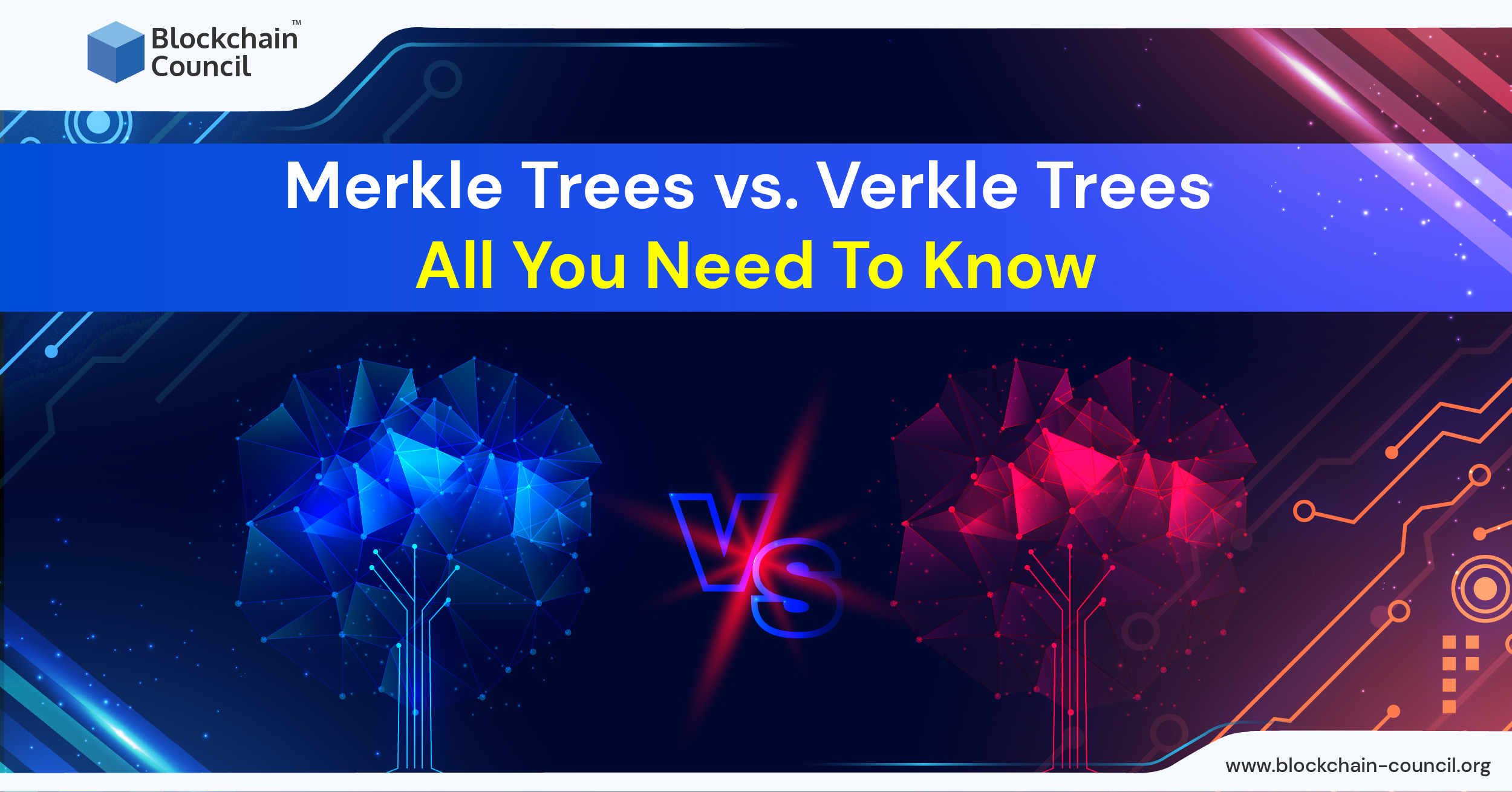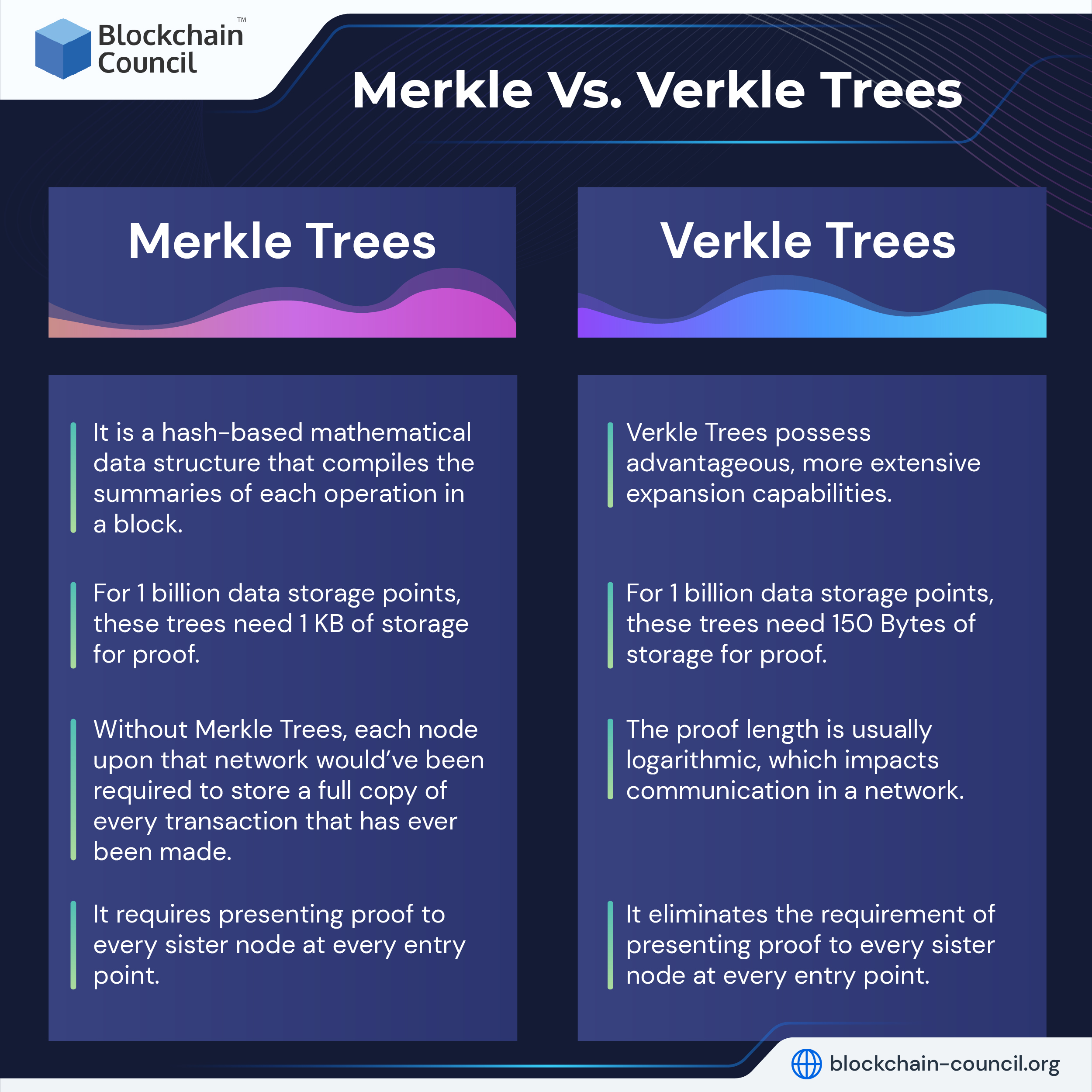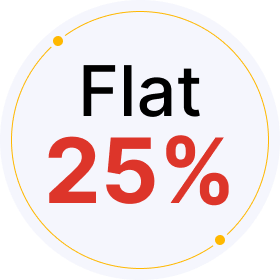
- Blockchain Council
- December 09, 2022
Merkle and Verkle Trees are some of the most valuable fundamentals of a blockchain. With web3 emerging worldwide and businesses recognizing the potential of web3 ecosystems, it has become an enthusiast’s favorite career domain. Blockchain Council has the perfect courses if you are looking for the best blockchain certification.
Our blockchain course provides a well-rounded understanding of Blockchain technology, and the globally accepted certification can help you pave your way to the top companies hassle-free. Merkle Trees and Verkle Trees are the basic but popular blockchain fundamentals; this article will deliver an explanation of both cryptographic algorithms with a brief comparison between them.
Let’s get started!
What Are Merkle Trees?
Merkle Trees were invented by Ralph Merkle in 1988 as a step to create digital solid footprints and signatures. It can be defined as a hash tree with each leaf node labeled with cryptographic hashing of data piled in blocks. The non-lead node is marked with cryptographic hashing but named as child nodes’ labels. Below are some critical characteristics of Merkle Trees that you should remember about Merkle Trees and its role in blockchain security.
- Binary hash trees, also known as Merkle trees, are a standard data structure used in computer science.
- They are employed in cryptographic products like bitcoin and other digital currencies to effectively and safely encrypt blockchain data.
- Merkle Tree utilizes approximately 1 kilobyte to store proof of a tree with almost a billion data storage points.
- It is a hash-based mathematical data structure that compiles the summaries of each operation in a block.
- The integrity and quality of the data are also verified. The process is fast and safe content certification across large databases.
Merkle Trees Structural Analysis
In a Merkle Tree, every individual node generates a digest that relies recursively and collectively. In these structures, every leaf computes its hash for attributes, and parents calculate the digest of their children’s left to right footprints.
Advantages of Merkle Trees in Blockchain
Merkle trees offer the following four key benefits:
- Verify the accuracy of the data: This method has the potential to verify the accuracy of the data successfully.
- The Merkle tree uses a minimal amount of disc space compared to many other data structures.
- Merkle trees could be subdivided into little bits of information for confirmation between networks.
- Adequate Confirmation: Data format is effective, and it doesn’t take long to check the data’s accuracy.
What Are Verkle Trees?
Verkle Trees are similar to Merkle Trees. It allows you to organize data in considerable volumes and create a witness for each data block that can be further called for confirmation by anyone with the tree’s root access.
- Verkle trees will play a significant role in the subsequent scaling improvements for Ethereum.
- Verkle Tree requires much lesser 150 bytes for proof of a data tree with as much as a billion data storage points.
- However, Verkle trees’ most important feature is how much proof-size efficient these appear.
Verkle Trees Structural Analysis
John Kuszmaul invented verkle Trees in 2018. A Verkle tree’s structure is organized so that a hash of a node’s children’s value is utilized to calculate an intermediate node’s value. Verkle Trees possess advantageous, more extensive expansion capabilities. However, the expansion is not always beneficial; once it gets too much expanded, the proof becomes delayed and shorter as the width increases.
Advantages of Verkle Tree In Blockchain
Verkle trees offer the following three key benefits:
- Contrasting to Merkel trees, Verkle trees allow for substantially smaller proof sizes for vast amounts of data.
- Networking communication is impacted by the proof length, which is usually logarithmic in state capacity.
- A Verkle proof includes proof that a lot of data has been saved and is easily verifiable by anyone with access to the tree’s top.
- Verkle tree is a use-case of the Polynomial Commitments proving system that relies on mathematical polynomial functions for data description.
Merkle Vs. Verkle Trees
Why Merkle and Verkle Trees Are Vital Blockchain Components?
Importance Of Merkle Trees
To understand Merkle Trees’ importance for blockchain technology, consider a blockchain without them. Let’s start with Bitcoin since it uses Merkle Trees extensively and is simpler to understand.
- Without Merkle Trees, each node upon that network would’ve been required to store a full copy of every Bitcoin transaction that has ever been made. One could imagine the amount of data that would contain.
- You will need to independently verify the data because any verification requests on Bitcoin will require a massive amount of information to be delivered over the internet.
- A verification machine would require significant processing power to examine ledgers to verify that there weren’t any alterations.
- Merkle Trees are indeed a remedy for this problem. They separate the information itself from the information’s evidence by hashing financial records.
- Demonstration of transactions can be legitimate with just a tiny quantity of information transmitted over the net.
- You may also use it to show that both ledger types use the same amount of nominal computing power & bandwidth.
Importance Of Verkle Trees
Verkle Tree is a late arrival compared to Merkle tree, which has been a blockchain platform’s core protocol for years. However, the Verkle tree has as many advantages and benefits for blockchain as Merkle Trees. Some of the essential characteristics of Verkle trees in a blockchain are mentioned below:
- They allow comparatively smaller proof sizes and thus are a primary source of Ethereum scaling in the market.
- These trees enable a significant reduction in proof sizes for large data volumes.
- The proof length is usually logarithmic, which impacts communication in a network.
- Verkle trees also require the prover to offer a single proof that demonstrates all possible links between the parent and the child along the paths from each leaf node.
- It eliminates the requirement of presenting proof to every sister node at every entry point, like the Merkle tree.
- Verkle Trees reduce the proof size on a scale of six to eight compared to ideal Merkle Trees, and the scale ranges up to 20-30 when compared to Ethereum’s heavy Patricia trees.
Summing Up
If you are planning to learn blockchain technology, Merkle Trees and Verkle Trees are some of the core functionalities of blockchain technology. We discussed the differences and advantages of these hashing techniques to store data on a blockchain platform with immutable scrutiny and security. If you are looking for detailed information on blockchain or blockchain technology courses, check out our certification courses to learn blockchain in the most innovative and fastest way around the globe. Blockchain Council is the leading web3 and blockchain technology training and certifications provider with renowned alums worldwide.



































































 Guides
Guides News
News Blockchain
Blockchain Cryptocurrency
& Digital Assets
Cryptocurrency
& Digital Assets Web3
Web3 Metaverse & NFTs
Metaverse & NFTs
